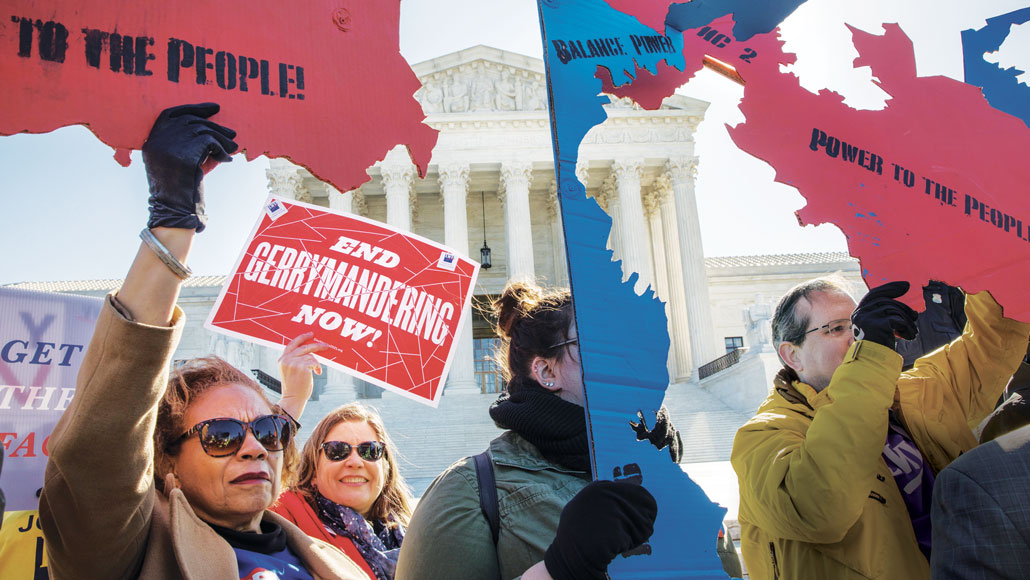How next-gen computer generated maps detect partisan gerrymandering
Researchers are ready to expose hidden biases when redistricting begins in 2021

In March 2019, the U.S. Supreme Court heard expert testimony on how to test for partisan skew in the way district maps are drawn. Protesters (shown) demanded an end to gerrymandering.
Evelyn Hockstein/The Washington Post/Getty Images
In October 2019, a state court determined that North Carolina’s congressional districts had been severely gerrymandered and struck down the state’s map.